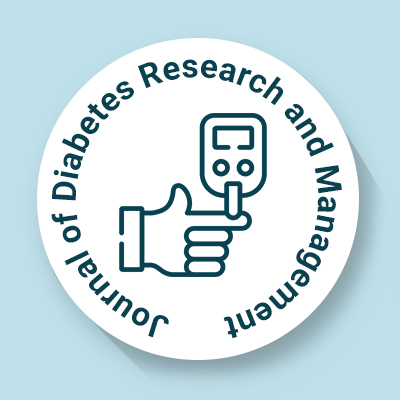
Journal of Diabetes Research and Management
OPEN ACCESS

OPEN ACCESS
Pediatric diabetes is becoming a significant global health issue, impacting children and teens with both type 1 and type 2 diabetes. This condition brings about unique challenges, affecting not just physical growth but also mental health and long-term wellness. To tackle pediatric diabetes effectively, it's crucial to grasp its complexities, which will help in creating better management strategies, advancing research, and enhancing the quality of life for those affected.
Type 1 diabetes is the most common type found in children, caused by the immune system mistakenly attacking the pancreatic beta cells, which leads to a lack of insulin. Early detection and prompt treatment are vital to avoid serious complications like diabetic ketoacidosis, which can be life-threatening. Ongoing research is delving into genetic factors, environmental influences, and immune responses that may lead to type 1 diabetes. Thankfully, innovations in insulin therapy, continuous glucose monitoring, and artificial pancreas technologies are revolutionizing how we manage this condition, improving blood sugar control and lowering the chances of long-term complications.
In recent years, there's been a troubling increase in type 2 diabetes among kids and teens, primarily due to rising obesity rates, lack of physical activity, and unhealthy eating habits. Unlike type 1, type 2 diabetes is marked by insulin resistance and a relative lack of insulin. Making lifestyle changes—like improving diet, increasing physical activity, and managing weight—are essential for preventing and managing pediatric type 2 diabetes. Additionally, medications such as metformin and newer glucose-lowering drugs are being studied for their effectiveness and safety in younger patients. Acting early is crucial to minimize the risk of complications like heart disease, nerve damage, and kidney issues later in life.
When it comes to pediatric diabetes, the psychosocial aspects are just as crucial. Managing a chronic condition during childhood and adolescence can have a profound effect on mental health and emotional well-being. Kids with diabetes often encounter hurdles related to social interactions, self-care, and sticking to their treatment plans. That's why support from healthcare providers, family, and friends is so important—it helps build resilience and ensures effective disease management. Psychological interventions, like cognitive behavioral therapy and structured education programs, have shown great potential in boosting self-efficacy and enhancing the quality of life for those living with diabetes.
Another key area to consider is the role of schools and communities in caring for children with diabetes. School staff, including teachers and nurses, are essential in supporting these kids by ensuring safe glucose monitoring, recognizing symptoms of hypo- or hyperglycemia, and fostering an inclusive atmosphere. Public health initiatives that raise awareness, implement school-based diabetes management programs, and advocate for supportive policies are vital in creating a nurturing environment for children with diabetes.
Moreover, advancements in research and technology are continually transforming pediatric diabetes care. Innovations like gene therapy, islet cell transplantation, and immunomodulatory treatments offer hope for future therapies that could modify the disease. The rise of digital health tools, mobile apps, and telemedicine is also improving access to diabetes care and enhancing patient outcomes. Ongoing clinical trials and collaborative research efforts are paving the way for personalized treatment strategies that cater to the unique needs of young patients.
By embracing a multidisciplinary approach that weaves together medical, psychological, and social viewpoints, the field of pediatric diabetes is making great strides. With ongoing research, education, and advocacy, we can look forward to better prevention methods, enhanced disease management, and, hopefully, a cure. Grasping the complexities of pediatric diabetes is crucial for improving the lives of the children and teens impacted by this condition, paving the way for a healthier future for generations to come.